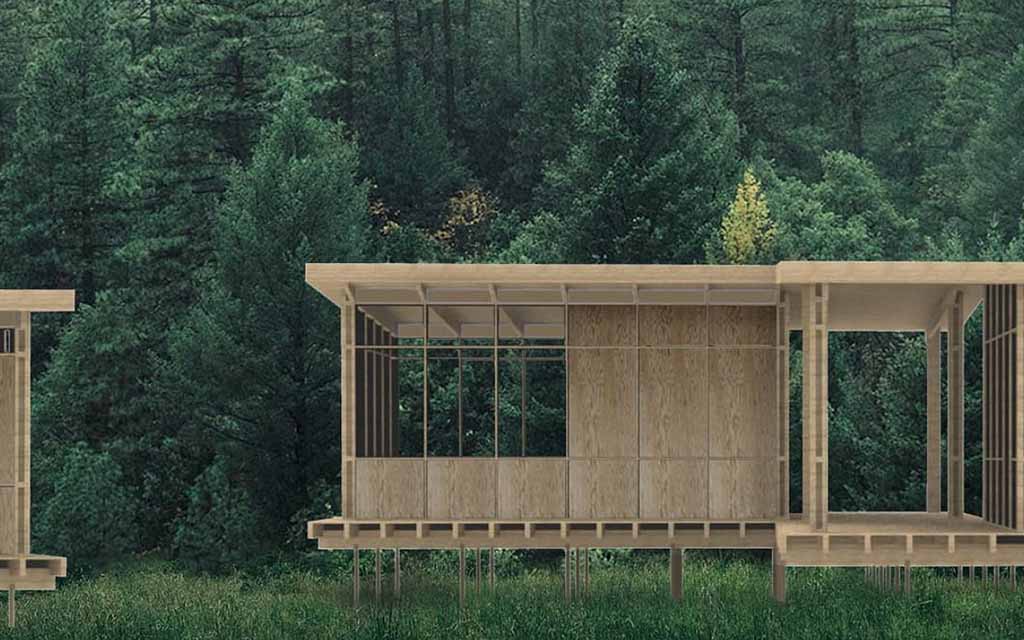
If you thought assembling a bed from Ikea was a headache-inducing experience, imagine being tasked to build a whole (if tiny) house for pennies on the dollar.
That was the assignment tasked to two Danish architecture students who were challenged by Ikea to create an adaptable living structure that would use as few materials as possible, as cheaply as possible. (You can see where this is going: Ikea is totally going to flat-pack a house eventually).
Johanne Holm-Jensen and Mia Behrens were invited to perform a six-month-long residency project at Ikea’s Space10, a Denmark-based future-living lab to create the cheapest, most versatile living structure possible and to say they succeeded is an understatement. They named their project “Building Blocks,” and managed to create a fully functional micro-home for $192 per square meter, or $9,400 in total.
The keys to their breakthrough, a fully modular home that can be shipped at low cost or downloaded and replicated around the world, are twofold. First, the duo used a single machine, the easily available and cost-effective CNC milling machine to craft the home. Second, they used a single material in FSC-certified plywood, one of the most pervasive building materials used in construction today.
The design is intended to be made so that it’s easily downloaded in the public domain, a practice known as “open-source architecture.” Designed with flexibility in mind, the tiny home could be utilized as anything from a backyard writing cabin to emergency housing in regions around the world. Once an open-source designed is released, it can be freely utilized by anyone to use, modify or share.
The “footprint” of the design is just 49 square meters (a mere 527 square feet), which excludes it from most building regulations. The students’ remarkable structure is also modular, which means it can be scaled to meet different needs, ranging from a cabin getaway to a camp for hundreds.

“For Building Blocks, we prioritized “honest architecture,” the architects wrote in Medium. “That means we haven’t concealed anything. The building is what you see. We believe it is smarter if people have to build Building Blocks themselves. To this end, we chose to expose the construction, so that everything from the bearing columns to the joists under the floor to the rafters supporting the ceiling is visible.”
While the building is remarkably transformative, the architects admit they still have a significant problem with a simple challenge: Water. Plywood is notoriously not water-resistant, and the builders had to resort to coating all the exterior surfaces with tar. The prototype also doesn’t drain well because all of its horizontal assemblies lack an incline. They noted that they’re waiting for producers of sheet materials to create more sustainable, long-lasting, and accessible solutions.




